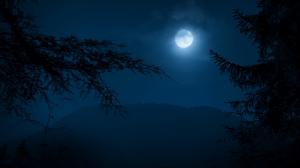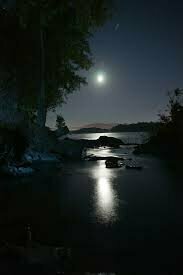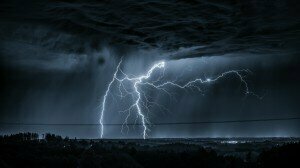 Evening music sets us up for relaxing, slowing down the day, or does it? Some composers see the evening as a time for quiet time and others note that not every evening ends quietly.
Evening music sets us up for relaxing, slowing down the day, or does it? Some composers see the evening as a time for quiet time and others note that not every evening ends quietly.
We must start, of course, with some of the most famous night music of the day, as it were: Mozart’s Serenade No. 13, Eine kleine Nachtmusik. The serenade, or evening music, was part of a whole genre of music for evening social occasions.
Mozart: Serenade No. 13 in G Major, K. 525, “Eine kleine Nachtmusik”: I. Allegro
Elizabeth Maconchy’s three-movement harp piece, Morning, Noon and Night, captures the slowing of day as night falls.
Maconchy: Morning, Noon and Night: III. Night
 Wilhelm Peterson-Berger’s piano collection, Frösö Flowers, was orchestrated for chamber ensemble and offers a very different view of twilight.
Wilhelm Peterson-Berger’s piano collection, Frösö Flowers, was orchestrated for chamber ensemble and offers a very different view of twilight.
Peterson-Berger: Frösöblomster, Book 1, Op. 16: No. 7. I skymmingen (At Twilight)
Prokofiev’s children’s suite, Summer Day, started out as a 12 piano pieces for children, but 6 years later, parts of it were orchestrated for small orchestra. The sixth movement, ‘Evening,’ is a beautifully quiet end to the day.
 Prokofiev: Letniy den (Summer Day), Op. 65bis: VI. Evening
Prokofiev: Letniy den (Summer Day), Op. 65bis: VI. Evening
Haydn was one of the few composers to write symphonies about the time of day: Symphony No. 6, Le Matin (Morning); No. 7 Le Midi (Noon); and No. 8, Le Soir (Evening). To close off his Evening Symphony, and to cool us down, Haydn gives us a thunderstorm. Listen in particular to the flute – that descending line was also used in his oratorio The Seasons for yet another thunderstorm.
Haydn: Symphony No. 8 in G Major, Hob.I:8, “Le soir”: IV. La tempesta: Presto
Finnish composer Madetoja’s song cycle Syksy (Autumn) includes an evening piece – the text starts the way we wish every evening would end: My desired moment arrives, My tired eye receives Sleep…. and then concludes very quietly.
 Madetoja: Syksy (Autumn), Op. 68: No. 4. Ilta (Evening)
Madetoja: Syksy (Autumn), Op. 68: No. 4. Ilta (Evening)
Sergei Prokofiev’s suite from his ballet Cinderella, concludes, as it must, with the mad clocks of midnight. They tick-tock along, driving our poor heroine to run home with urgency.
Prokofiev: Cinderella, Ballet Suite No. 1, Op. 107: Midnight
Astor Piazzola, in writing music about his beloved Buenos Aires, always gives us a slightly different view of the city. In his Midnight in Buenos Aires, it’s a meditation…people are dancing around the self-absorbed guitarist….and all are satisfied.
 Piazzola: Midnight in Buenos Aires
Piazzola: Midnight in Buenos Aires
George Crumb wrote his own version of Mozart’s A Little Night Music as Eine Kleine Mitternachtmusick (A Little Midnight Music), but it’s not Mozart, it’s Thelonious Monk’s jazz standard of Round Music that’s the point of inspiration. The performer plays the keys and other parts of the piano for a ghostly sound.
Crumb: Eine Kleine Mitternachtmusick (A Little Midnight Music): IX. Midnight Transformation
You May Also Like
- Music and Nature
Seasons: Spring Enjoy our special Spring's music selection for the season of renewal - Music and Nature
Seasons: Winter From dancing music, ballets, to calm piano classics, enjoy a musical winter! - Music and Nature
Time of Day: Morning Enjoy a dose of morning music with your coffee! -
 Music and Nature: Bugs Buzzing, whizzing… How are bugs portrayed in music?
Music and Nature: Bugs Buzzing, whizzing… How are bugs portrayed in music?
More Playlists
- Bedřich Smetana’s Polkas
Dancing the Czech Soul from Salon to Stage Find out how he transformed folk dance into sophisticated concert music - Albumblätter
Pages from Schumann’s Heart A complete guide to these 20 intimate piano miniatures - Moonlit Moods
The Lyrical Charm of Carl Czerny’s Nocturnes Intimate Romantic piano works bridging Classical and Romantic eras -
 Joseph Haydn: 10 Most Ingenious String Quartets Explore how the Father of the String Quartet revolutionized chamber music
Joseph Haydn: 10 Most Ingenious String Quartets Explore how the Father of the String Quartet revolutionized chamber music



Thank you for this thoughtful, insightful, and stylistically far-reaching mind and ear enriching essay.